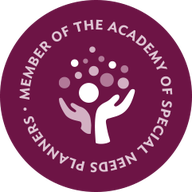If you are like most people, you didn’t assemble your special needs plan all at once. You may have created a special needs trust in 2001, purchased life insurance to fund it in 2005, established a guardianship when your child turned 18 in 2008 and drafted a Memorandum of Intent last year. Now all of the documents that make up your special needs plan reside in various envelopes “strategically” placed in different drawers or folders all over your house. While this filing system may make perfect sense to you, it could be a nightmare for your loved ones if something happens to you.
It is very important for everyone, but especially for parents of children with special needs, to establish an organized system for conveying information about their special needs plan to the people who will be carrying it out. The best way to do this is to create a special needs planning binder or file that contains, at the very least, the following key documents:
- Your special needs trust, will, health care proxy and durable power of attorney, along with any other estate planning documents like irrevocable life insurance trusts or revocable trusts
- Information about your home, including copies of the deed, mortgage(s), homeowners insurance and statements showing how to pay the utility, tax and mortgage bills
- Court paperwork for a guardianships or conservatorships, especially your Letters of Appointment, accounts and any bond paperwork
- A summary of your financial accounts including the bank/financial institution name, account type and account number
- Copies of your retirement plan and confirmation of retirement plan beneficiaries
- Life insurance policies and beneficiary designations
- A Letter of Intent that gives instructions to your child’s caregiver
- Information about your child’s public benefits, including SSI/SSDI award letters, Medicaid information and Section 8 determinations. just to name a few possibilities
- A list of your child’s caregivers, their contact information and their roles
- If your child is still in school, a copy of any Individualized Education Program (IEP)
- A written medical history for your child and information about his doctors and medications and where to find them
Once you have created this binder, you need to make sure that your relatives or friends can find it easily, so don’t lock it in a safe deposit box that no one can access!
